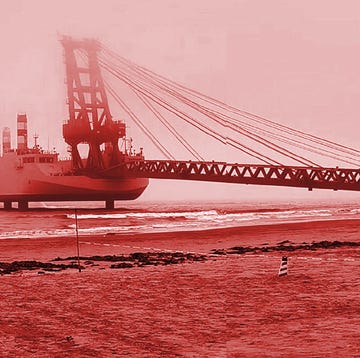The universe is full of exploding stars, matter eating black holes, and swaths of dark matter and energy that scientists still don’t quite understand. To the average person, it might look like a chaotic place. But according to scientists, the universe is actually quite stable. Referred to as a vacuum state, this stability is what helps create consistent laws of physics that scientists can then use to study the world around us.
But there’s a big problem. While the universe may appear stable, scientists who study quantum fields are worried that one of these fields may be teetering on the edge of a new energy state that could send it careening into instability. This instability is called false vacuum decay, and it would act like a typhoon sweeping through and dismantling the universe as we know it.
Even the laws of physics may be rewritten, says Peter Onyisi, Ph.D., an associate professor of physics at the University of Texas at Austin.
Quantum fields are essential to understanding this existential cosmic threat. The easiest way to grasp these invisible fields is by picturing one that is very familiar to us: the electromagnetic field. It’s responsible for interactions like two bar magnets being repelled, the electricity running through our devices, and even sunlight.
If you’ve ever played with bar magnets in a science class, you may have seen how these invisible magnetic interactions can be visualized through the effect they have on iron shavings, revealing curved magnetic field lines. While invisible to the naked eye, these field lines criss-cross through everything in the universe—including us. The electromagnetic field is just one of many quantum fields that do this.
To be in a stable, “true” vacuum state, these fields must be in their lowest energy states. But special properties of the Higgs field, which is generally in charge of giving all particles mass, have led some scientists to theorize that while the Higgs looks stable, it may actually just be in a false or temporary vacuum state, waiting to enter an even lower energy state.
You can think about this like the valleys in a mountain range, Onyisi says.
“Imagine [driving] across a mountain range [and] crossing lots of different valleys—the bottom of each is lower than the road immediately behind or ahead, but not necessarily the absolute lowest point you would reach,” he says. “A vacuum that is not the absolute lowest energy state is called a ‘false’ vacuum as opposed to the ‘true’ vacuum.”
Quantum fields are compelled to reach their lowest energy states at all costs, and the problem with the Higgs field is that if it is truly in a false vacuum state, then there is a chance that it could one day move itself to this new “true” vacuum via quantum tunneling—a process in which particles can pass through barriers they normally are not energetic enough to overcome. This action would not only transform the Higgs field, but could lead to a radical restructuring of the underlying physics and chemistry of the universe.
“The mass of electrons and quarks would suddenly become trillions of times bigger [and] I suspect that most atoms beyond hydrogen would no longer exist and disintegrate,” says David Tong, Ph.D., a professor of theoretical physics at the University of Cambridge. “Nuclear reactions no longer work, so stars fail to shine. Chemistry is out the window, [which means] life is not possible. The universe would no longer be the wonderful vibrant place it is today.”
All of this catastrophe—which physicists like Onyisi and Tong still caution is highly theoretical—would all happen as a result of something called a cosmological bubble. In essence, this bubble is an expansion of the true vacuum from one pocket of the universe through the entire universe.
But, since these ideas are based in theory and not on observations or experiments, scientists don’t know exactly how these bubbles would propagate or what their properties might be.
That’s what Jaka Vodeb, Ph.D., a postdoctoral researcher at Forschungszentrum Jülich in Germany, and his co-authors hoped to answer in new work published earlier this year in the journal Nature Physics. In this research, Vodeb and colleagues used a type of quantum hardware, called a quantum annealer, to manipulate 5,564 qubits (or “quantum bits,” the basic unit of information in quantum computing) to simulate the behavior of these bubbles.
“We found something very interesting,” Vodeb says. “Contrary to previous ideas, these bubbles don’t spread on their own.” Instead, the cosmological bubbles spread through complex interactions in which the larger bubbles feed upon the smaller ones. While this new work was a simulation of a simplified model of these dynamics, the findings can still shed light on what may one day happen in our own universe.
But luckily for us, even if the Higgs field really is in a false vacuum state, we wouldn’t be around to see what happens if that state ever does decay.
“The happy news is that the time it takes to leave the false vacuum is around a billion, billion, billion, billion, billion, billion times longer than the current age of the universe,” Tong says. “I don’t think we need to worry.”

Sarah is a science and technology journalist based in Boston interested in how innovation and research intersect with our daily lives. She has written for a number of national publications and covers innovation news at Inverse.













